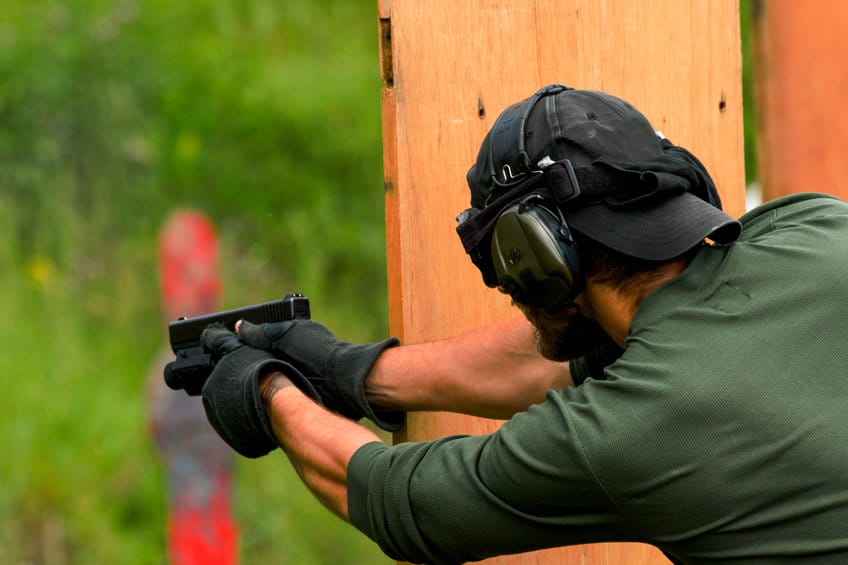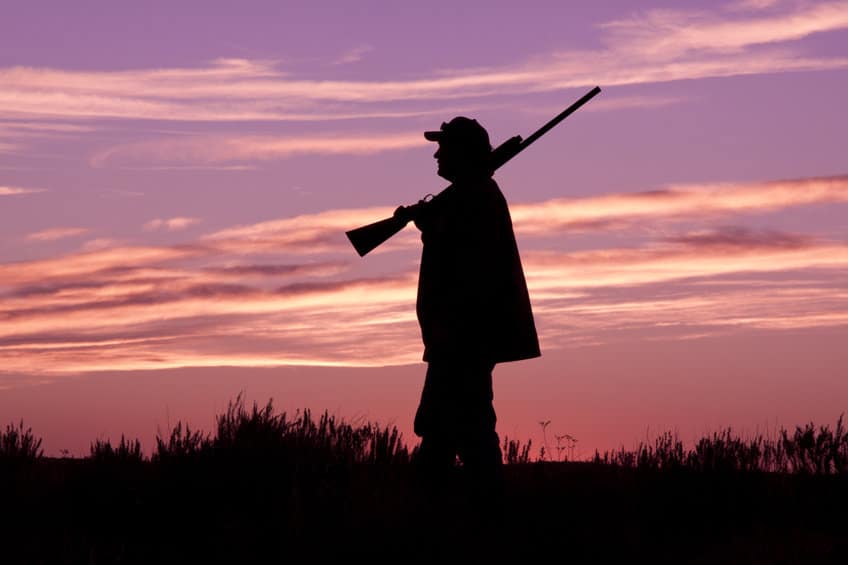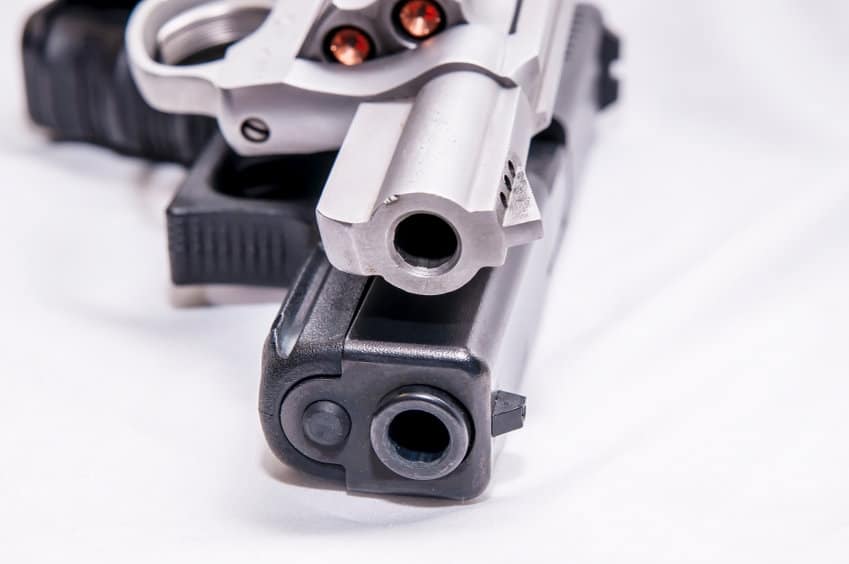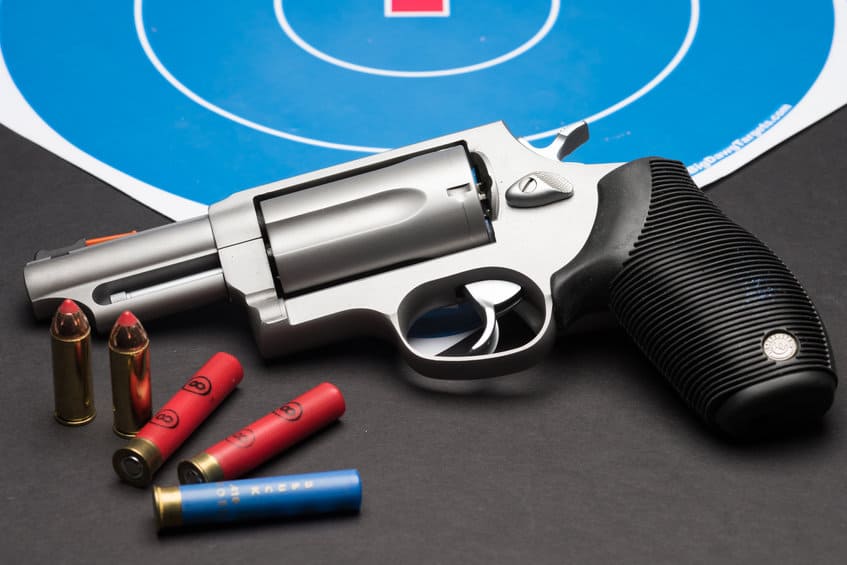Nearly everyone these days is familiar with the .40 Smith & Wesson Cartridge. But many are not aware that “the 40” is only the latest in a long line of .40 caliber handgun cartridges that have come on the scene since the late 1800s.
At least eight different rounds have been brought to market with a bore diameter of .40 caliber or so since 1863.
Table of Contents
.41 Rimfire
The party started in 1863 with the introduction of the .41 Rimfire. This little round was designed to be used in the small single-shot derringer-type pistols of the era and offered a vast improvement in stopping power over the .22 and .32 rimfire rounds that were common during that time period.
.41 Colt
Colt kept the party going in 1873 with the .41 Short Colt. A centerfire round equivalent to the .41 Rimfire mentioned above. In 1877 Colt stretched the cartridge to make the .41 Long Colt (.41 LC), which was mildly popular into the early 1900s. Both rounds originally employed a heeled bullet, similar to a .22 Long Rifle, where the outside diameter of the bullet is the same as the case, and a stepped rear section of the projectile sits inside the cartridge case mouth.
Then in the mid-1890’s Colt changed the cartridge to the more standard design where the bullet diameter is the same as the inside of the case mouth. However, the bore diameter was not reduced correspondingly. It was reduced to .400, so that barrel stock from .38-40 production could be used. But the projectile diameter was reduced to .386, and a hollow base bullet was loaded so that the bullet base would expand and grip the rifling. While it was an effective defense round at close range, accuracy problems did not help its popularity, and the .41 Long Colt was dropped from the lineup before World War 2.
.38-40 Winchester
Brought to market in 1874, the .38-40 was originally a rifle cartridge chambered in the Winchester 1873. The round was quickly chambered in Colt revolvers, and for many years seperate rifle and pistol loadings were available. The rifle loading will usually be labeled as High-Speed, with a warning about not using them in a handgun. The .38-40 is a classic deer and small game round, with ballistics similar to the .40 S&W in lower loadings, with the old High-Speed rounds pushing past 1700 fps in a long-barreled rifle. Despite these advantages the .38-40 was functionally obsolete from the 1940s until resurrected by the sport of Cowboy Action Shooting. Despite being called a .38 it has an actual bullet diameter of .400, making it the first true .40 caliber handgun cartridge.
.401 Herters Powermag
Introduced in 1961 by the famous Herter’s mail-order company, the .401 was the first .40 caliber handgun cartridge since 1873. Housed in a sturdy single-action revolver made by J.P. Sauer & Sohn, it predated the .41 Magnum by several years and offered similar performance. The .401 really should have been a successful round. The revolvers were half the cost of a Ruger Black Hawk and well made, but the .401 never caught on, and when Herter’s went under, the cartridge did too.
It was a shame because the .401 is a well-balanced round offering more power than a .357 Magnum with a flatter trajectory than a .44 Magnum. Had it received the same level of acceptance (or better) as the later .41 Magnum, it might still be around today. With velocities pushing 1200 fps with cast bullets and original jacketed loads exceeding 1400 fps, this would have made a great carbine round.
10mm Auto
Developed by Norma Ammunition in 1983 for the Bren Ten pistol built by Dornaus & Dixon Enterprises, the 10mm Auto is a beast of round for automatic pistols. The Bren Ten fizzled after a few years, but then the gun showed up in the hands of Sonny Crocket on Miami Vice, and the public was interested. Colt then gave the 10mm a home in its Delta Elite 1911 in 1987, and then, in 1988, the FBI tested the round for adoption. Things were looking bright for the cartridge. However, it was found that full-power 10mm ammunition was a bit much recoil for most agents, and a reduced charge was created. This reduced loading led to the development of the .40 Smith and Wesson, which we will discuss later.
The 10mm Auto has found a home today on the hips of hunters and specialized elite law enforcement teams like the FBI Hostage Rescue Team, who need the power when dealing with large predators of the two- and four-legged variety. I carry a 10mm 1911 while deer hunting, and I would not hesitate to kill a deer with it. Ballistics show a 180-grain bullet at 1300 fps from a five-inch barrel, plenty powerful enough to do the job.
.400 Cor-Bon
The .400 Cor-Bon was created in 1997 to give 10mm Auto performance in a standard 1911 by simply switching the barrel. Casings are formed by necking down .45 ACP brass to .40 caliber and adding a sharp shoulder. Chamber pressures are lower than the 10mm, but the .400 only gives up 200 fps on average versus the mighty 10mm.
While this cartridge is primarily a handloading proposition, factory defensive, and hunting ammunition is available from Underwood Ammo. The .400 Cor-Bon is an excellent round that allows the easy conversion of a .45 ACP 1911 to a higher-performance option with little investment. It boggles my mind why this round is not more popular.
.40 Smith & Wesson
By far the most popular cartridge on this list, the “40”, as it is known, exploded onto the scene in 1990. Initially chambered in handguns by Glock and Smith & Wesson, the .40 S&W offered the same performance as the FBI’s reduced loading of the 10mm Auto in a shorter case that fit into handguns sized for the 9mm Luger. Some considered the .40 S&W a Goldilocks round that offered the ideal balance of power versus recoil. Many law enforcement agencies agreed, and the round saw widespread adoption. While it has seen some decline in popularity recently, the .40 S&W will continue to be a popular cartridge for the foreseeable future simply because it offers more power than the standard 9mm in the same size package.
Final Thoughts.
While .40 caliber handgun cartridges were popular in the old west, they languished for a few years before coming back with a vengeance. The popularity of the .40 S&W and 10mm Auto are proof that America has finally warmed to the medium-bore handgun. Here’s hoping that does not change.




